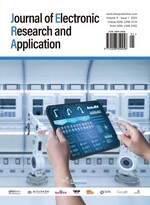Agricultural IoT Security Risk Assessment Method Based on Random Forest
Abstract
The agricultural Internet of Things (IoT) system is a critical component of modern smart agriculture, and its security risk assessment methods have garnered increasing attention from the industry. Current agricultural IoT security risk assessment methods primarily rely on expert judgment, introducing subjective factors that reduce the credibility of the assessment results. To address this issue, this study constructed a dataset for agricultural IoT security risk assessment based on real-world security reports. A PCARF algorithm, built on random forest principles, was proposed, incorporating ensemble learning strategies to enhance prediction accuracy. Compared to the second-best model, the proposed model demonstrated a 2.7% increase in accuracy, a 3.4% improvement in recall rate, a 3.1% rise in Area Under the Curve ( AUC), and a 7.9% boost in Matthews Correlation Coefficient (MCC). Extensive comparative experiments showed that the proposed model outperforms others in prediction accuracy and robustness.
References
Karlov AA, 2017, Cybersecurity of Internet of Things—Risks and Opportunities. Proceedings of the XXVI International Symposium on Nuclear Electronics & Computing (NEC’2017), 2017: 182–187.
Stafford JV, 2019, Precision Agriculture ’19. The Netherlands: Academic, Wageningen.
Ahmed N, De D, Hussain I, 2018, Internet of Things (IoT) for Smart Precision Agriculture and Farming in Rural Areas. IEEE Internet of Things Journal, 5(6): 4890–4899.
Ferrag MA, Shu L, Friha O, et al., 2021, Cyber Security Intrusion Detection for Agriculture 4.0: Machine Learning-Based Solutions, Datasets, and Future Directions. IEEE/CAA Journal of Automatica Sinica, 9(3): 407–436.
Zhao C, 2019, Research on the Development Status and Strategic Goals of Smart Agriculture. Smart Agriculture, 1(01): 1–7.
Malavade VN, Akulwar PK, 2016, Role of IoT in Agriculture. IOSR J. Comput. Eng., 2016: 56–57.
Tewari A, Gupta B, 2020, Security, Privacy and Trust of Different Layers in Internet-of-Things (IoTs) Framework. Future Gener. Comput. Syst., 108: 909–920.
Zhu WJ, Deng ML, Zhou QL, 2018, An Intrusion Detection Algorithm for Wireless Networks Based on ASDL. IEEE/CAA J. Autom. Sinica, 5(1): 92–107.
Kuthadi VM, Selvaraj R, Rao YV, et al., 2023, Towards Security and Privacy Concerns in the Internet of Things in the Agriculture Sector. Turkish Journal of Physiotherapy and Rehabilitation, 32(3).
General Office, Standing Committee of the National People’s Congress, 2016, Cybersecurity Law of the People’s Republic of China. China Democracy and Legal Press, Beijing, 2016.11.
National Standard of the People’s Republic of China, 2022, GB/T 20984-2022 Information Security Technology—Risk Assessment Method for Information Security.
National Standard of the People’s Republic of China, 2019, GB/T 22239—2019 Information Security Technology — Baseline for Classified Protection of Cybersecurity.
National Standard of the People’s Republic of China, 2019, GB/T 28448—2019 Information Security Technology —Evaluation Requirement for Classified Protection of Cybersecurity.
Wang Z, Lai C, Chen X, et al., 2015, Flood Hazard Risk Assessment Model Based on Random Forest. Journal of Hydrology, 527: 1130–1141.
Cen H, Huang D, Liu Q, et al., 2023, Application, Research on Risk Assessment of Municipal Pipeline Network Based on Random Forest Machine Learning Algorithm. Water, 15(10): 1964.

